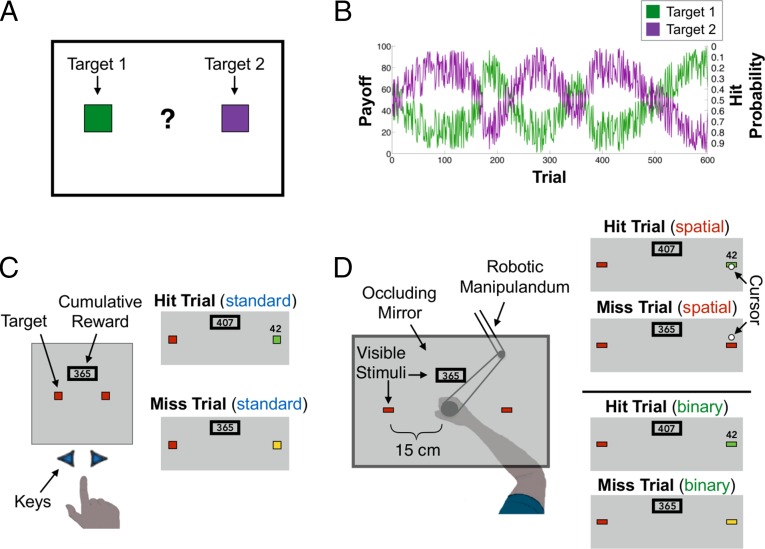Fig. 1.
Design. (A) Participants performed a two-armed bandit task, choosing between two targets to maximize monetary payoff. (B) Two reflected, noisy sinusoids defined the payoff value (left axis) and probability of reward (hit, right axis, inverted) for the targets. (C) In the Standard condition, participants selected targets by pressing the left or right arrow keys on a keyboard. Example hit and miss trials are shown on the right. (D) In the Spatial and Binary conditions, participants reached to the selected target using a robotic manipulandum. Vision of the hand was occluded. In the Spatial condition, a small cursor appeared after the hand passed the target. On hit trials, the cursor overlapped with the target; on miss trials, the cursor appeared outside the target. Feedback in the Binary condition matched the Standard condition.

